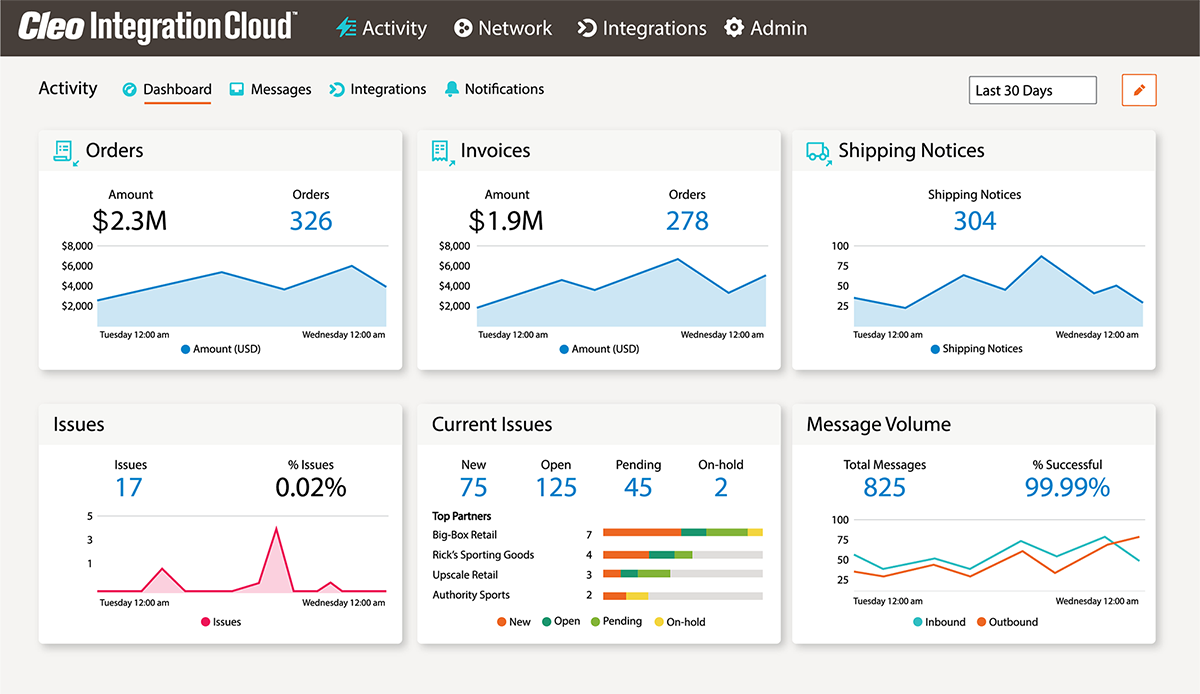If You’re Managing Multiple Solutions…You Need B2B System Integration

It’s no secret – companies that make the business decision to invest in modernizing their integration technology are the ones best prepared to overcome the supply chain challenges presented by COVID-19.
But for those companies who have yet to invest in a B2B ecosystem integration platform and are instead relying on multiple solutions, odds are those businesses are struggling to meet demand and serve the best interests of their customers.
In fact, if you find yourself in a company where any of the following are happening to your business, you’re likely managing multiple solutions and that’s why you need B2B system integration:
1. Wasting time with swivel-chair integrations
Put an end to swivel-chair integrations by automating critical EDI workflows to ensure business process data is error-free and also on time.
2. High exception rates
Poor exception management processes cause disruptions in the order-to-cash process and results from systems and applications not being able to effectively share critical data.
3. Inefficient workflows and operations
When a company’s workflow is inefficient, it’s easy to lose visibility and functionality into an order.
4. Time-consuming change management to existing maps and integrations
Constantly having to update and/or change maps and different integrations means you’re not spending time on processes that really move the needle.
5. Recurring errors in B2B transactions
The more manual processes you have, the more likely you are to encounter some type of error, causing endless delays.
Here’s How You Overcome All Those Obstacles…
As many as 40% of companies admit that having multiple integration solutions is a problem, and 66% say they are relying on as many as three different integration solutions. There’s no need for so many! If you are bolting together your business processes with more than one centralized integration solution, your B2B integration is broken.
That’s right, it’s broken. You are relying on outdated and disparate technologies that are putting you at a great disadvantage to your competitors, and it’s only a matter of time before your customers catch on and start questioning where their loyalty lies.
Are you willing to risk losing business simply because you don’t want to invest in a modernized technology platform? Think of everything you gain through B2B system integration and modern integration technology:
B2B integration expertise
Managed services to augment your teams
Modern, easy to use cloud user interface
EDI/API/MFT/eCommerce capabilities – all on the same platform
If your current integration strategy that does not support end-to-end integration, you ought to embrace a modern integration platform that can do all these things and more, including transforming EDI documents and putting them into your back-end ERP/WMS/TMS/CRM system to complete its lifecycle B2B transaction.
The capability to do EDI, API, MFT and eCommerce transactions using just one platform will help you leverage integration for the benefit of not just your company, but your entire business ecosystem.
There are other smart moves you can make to fix B2B integration at your company, and we’ll be writing about them in future blogs. But if you want the full story now, download our booklet, ‘Your B2B Integration Strategy is Broken – Here’s What to Do About It’

About Cleo
